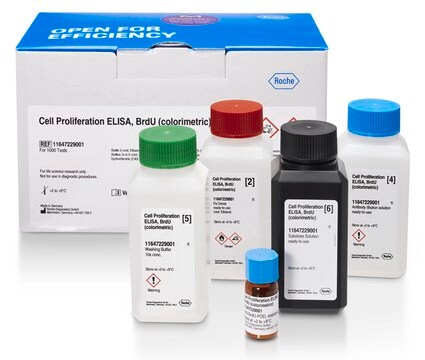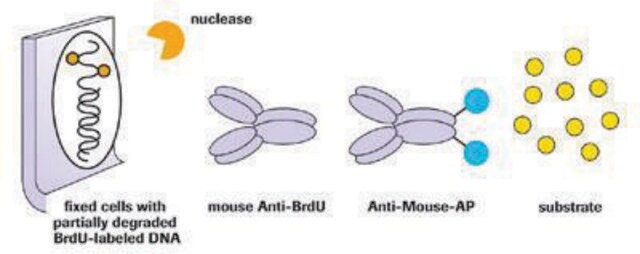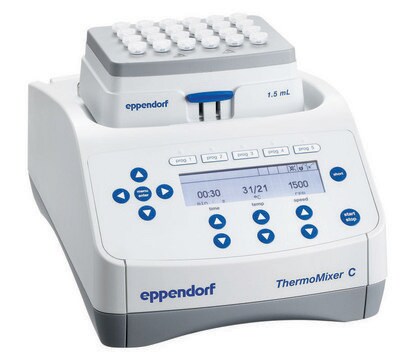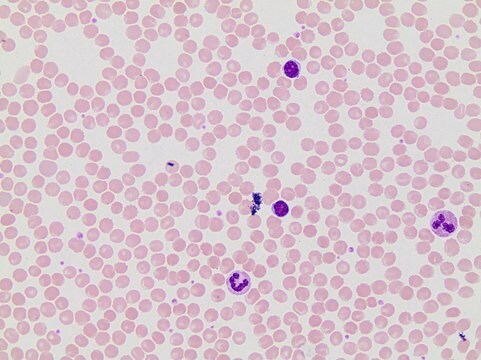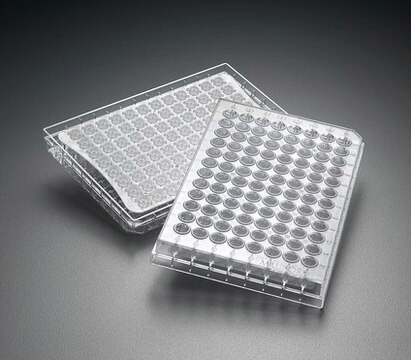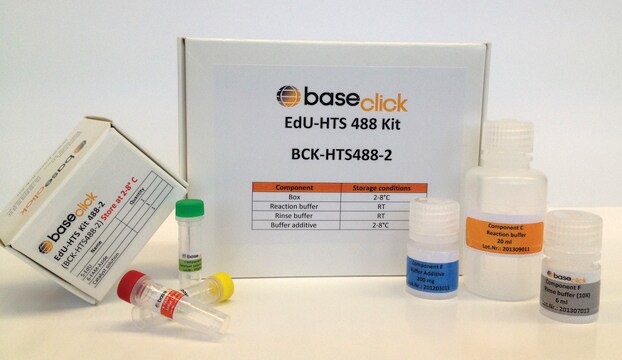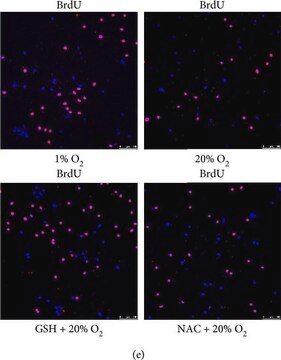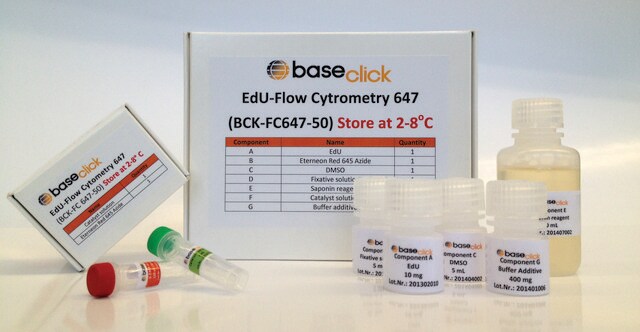11669915001
Roche
Cell Proliferation ELISA, BrdU (chemiluminescent)
Synonyme(s) :
BrdU, cell proliferation
About This Item
Produits recommandés
Utilisation
sufficient for ≤1,000 tests
Niveau de qualité
Fabricant/nom de marque
Roche
Technique(s)
ELISA: suitable
Méthode de détection
chemiluminescent
Conditions d'expédition
wet ice
Température de stockage
2-8°C
Catégories apparentées
Description générale
Spécificité
Application
- for bromodeoxyuridine (BrdU) proliferation assay in ReN and primary astrocytes
- to test the effect on imatinib on the proliferation of neuroblastoma cells using BrdU incorporation assay
- to check the effect of palbociclib on cell cycle inhibition using BrdU incorporation in pancreatic patient-derived primary cell lines
- Detection and quantification of cell proliferation induced by growth factors and cytokines
- Determination of the inhibitory or stimulatory effects of various compounds on cell proliferation in environmental and biomedical research, and in the food, cosmetic, and pharmaceutical industries
- Measurement of the immunoreactivity of lymphocytes, stimulated by mitogens or antigens
- Analysis of the chemosensitivity of tumor cells to different cytostatic drugs in medical research
Conditionnement
Composants
- BrdU Labeling Reagent, 1,000x conc
- FixDenat
- Anti-BrdU-POD 4. Antibody Dilution Solution
- Washing Buffer PBS, 10x conc.
- Substrate Component A
- Substrate Component B
Autres remarques
Composants de kit seuls
- BrdU Labeling Reagent
- FixDenat ready-to-use
- Anti-BrdU-peroxidase antibody
- Antibody Dilution Solution ready-to-use
- ready-to-use 10x concentrated
- Substrate Component A
- Substrate Component B
Mention d'avertissement
Danger
Mentions de danger
Conseils de prudence
Classification des risques
Eye Irrit. 2 - Flam. Liq. 2 - Muta. 1B - Skin Sens. 1
Code de la classe de stockage
3 - Flammable liquids
Classe de danger pour l'eau (WGK)
WGK 1
Certificats d'analyse (COA)
Recherchez un Certificats d'analyse (COA) en saisissant le numéro de lot du produit. Les numéros de lot figurent sur l'étiquette du produit après les mots "Lot" ou "Batch".
Déjà en possession de ce produit ?
Retrouvez la documentation relative aux produits que vous avez récemment achetés dans la Bibliothèque de documents.
Les clients ont également consulté
Articles
Regulation of the cell cycle involves processes crucial to the survival of a cell, including the detection and repair of genetic damage as well as the prevention of uncontrolled cell division associated with cancer. The cell cycle is a four-stage process in which the cell 1) increases in size (G1-stage), 2) copies its DNA (synthesis, S-stage), 3) prepares to divide (G2-stage), and 4) divides (mitosis, M-stage). Due to their anionic nature, nucleoside triphosphates (NTPs), the building blocks of both RNA and DNA, do not permeate cell membranes.
Cell based assays for cell proliferation (BrdU, MTT, WST1), cell viability and cytotoxicity experiments for applications in cancer, neuroscience and stem cell research.
Cell based assays for cell proliferation (BrdU, MTT, WST1), cell viability and cytotoxicity experiments for applications in cancer, neuroscience and stem cell research.
Notre équipe de scientifiques dispose d'une expérience dans tous les secteurs de la recherche, notamment en sciences de la vie, science des matériaux, synthèse chimique, chromatographie, analyse et dans de nombreux autres domaines..
Contacter notre Service technique